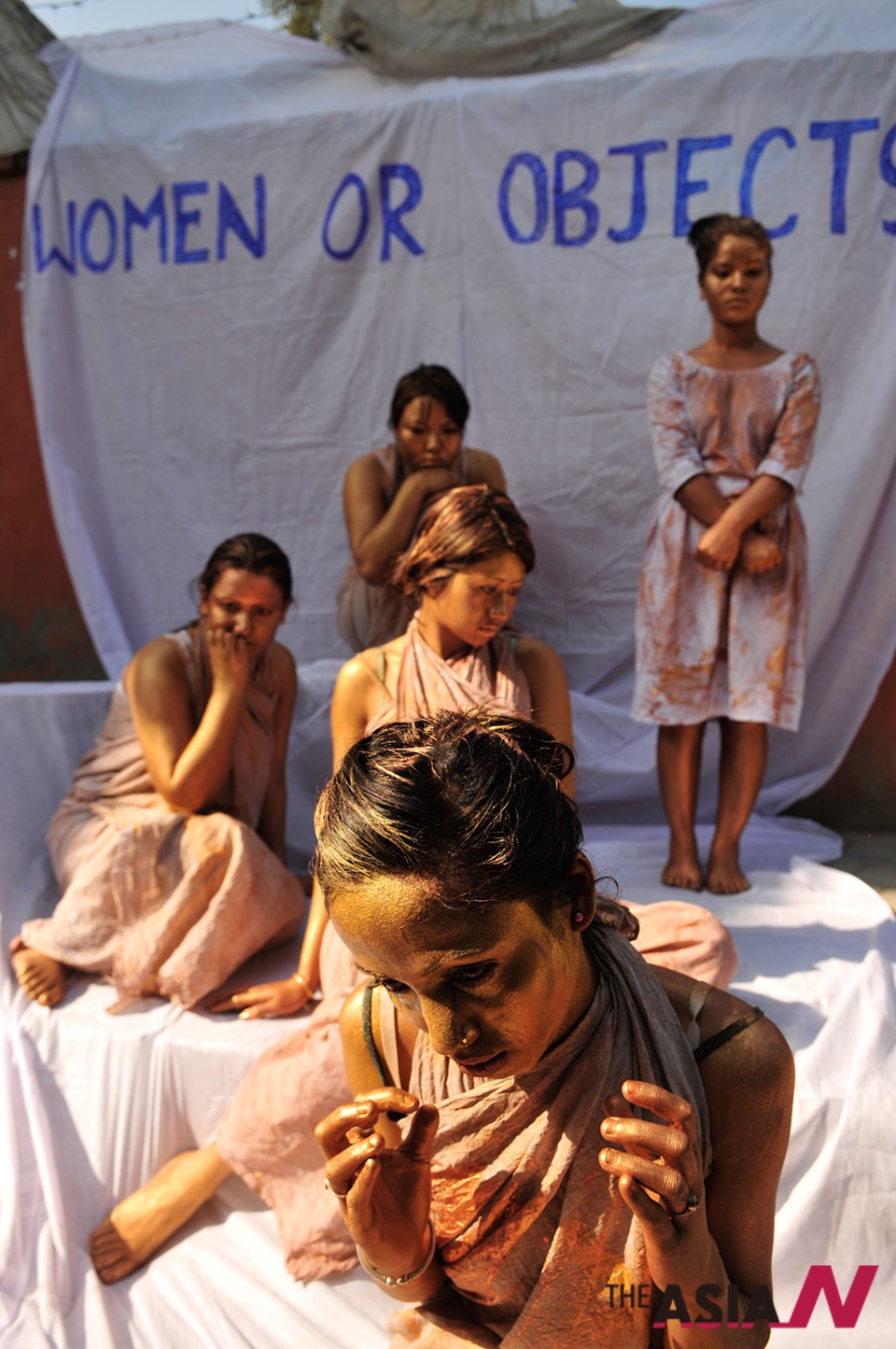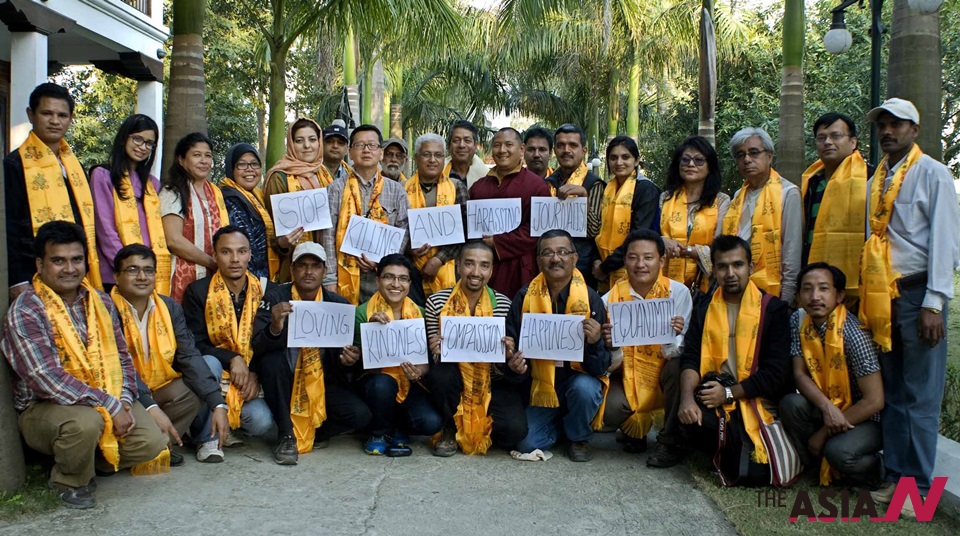Buddhism and journalsim for peaceful world
At Tribhuvan airport in Kathmandu, all a first-time tourist needs to do to get a quick grab of interesting facts about Nepal is to look up.
“Nepal has the world’s tallest mountain and shortest man,” says a printed overhead sticker. Another reads, “Lumbini is the birthplace of Lord Buddha.” This one is repeated down the aisle.
A good reminder since the Buddha was born 2,500 years ago. But also because some Indian politicians and journalists had previously claimed that Buddha was Indian-born. However, historical records and archaeological finds have put paid to those claims.
A pillar to mark Emperor Ashoka’s visit in 249 BC bore an inscription “Hida Budhe Jate Shakyamuniti,” viz Buddha was born here. Siddhartha Gautama was born in 623 BC. At his birth, a soothsayer told King Suddhodana that his son would either be a great ruler or a great saint.
Heir to the throne of the Sakya republic, Gautama had led a luxurious cloistered life in the palace until shocking encounters with an aged man, a leper and a funeral procession led him to bemoan his fate and that of all human beings.
Disillusioned but determined to escape from the cycle of birth, old age, sickness and death, he next chanced upon an ascetic monk whose discourse was to change his destiny. “Everything changes and there is no permanency,” said the hermit.
“I long for the happiness that does not decay, the treasure that will never perish, the life that knows of no beginning and end; therefore I have destroyed all worldly thought and retired to an unfrequented dell to live in solitude, begging for food. I devote myself to the one thing needful.”
At age 29, and a recently turned father, Gautama left home to begin the contemplative life of a wandering Boddhisattva.
An earlier effort of intense meditation, fasting and austere living turned him into an emaciated man, but led nowhere to the salvation he had sought.
The lesson he drew from this experience was to avoid the extremes of self-indulgence and self-mortification. Thus was born the doctrine of the Middle Way. (Also known as the Eight-Fold Path, it comprises of the 8Rs: right views, right aspirations, right speech, right conduct, right livelihood, right effort, right mindfulness and right rapture or meditation.)
Bouncing back to form after his ordeal, Gautama sat serenely under a Bodhi tree to contemplate on the sequence of birth, and the cause and source of suffering (dukka) afflicting human beings. His Eureka moment came when in a flash he perceived that desire (tanha) was the cause of all evil. It followed that the way to end suffering was to purge desire through denying the self.
These are known as the Four Noble Truths of the awakened Buddha. Following his Enlightenment in Bodh Gaya, in the Indian state of Bihar, Sakyamuni Buddha preached his first sermon in Sarnath (Bernares), which contained a mission statement of universal appeal.
Buddha belongs to the world
He said: “Monks, I am delivered from all fetters, human and divine, and so are you. Go now and wander for the gain of many, for the welfare of the many, out of compassion for the world, for the good, for the gain and for the welfare of gods and men.”
True to his mission, in his 45 years of traversing the kingdoms of Kosala, Magadha and Anga, the Tathagata found time to discourse with the powers-that-be on his doctrines, but scrupulously stayed out of politics.
Granted the prince-turned preacher had once used his influence and reputation to talk Vidudabha the Kosala king out of invading the Sakya republic. But that did not prevent Vidudabha from later attacking Kapilavattu and perpetrating a big massacre, taking advantage of Sakya youths’ conversion to the pacifist faith.
Again, in a rare instance of Buddha being drawn on a political issue, the Magadha king asked him whether his campaign to crush the Vajjian confederation would succeed. No doubt, he was aware of Sakyamuni’s Kshastriya (warrior) pedigree. The Wise One said the king would prosper if he acted in a united and honourable manner as well as respected the faith. As borne out by historical events, Sakyamuni’s message of peace and compassion (metta) was the last thing on the minds of empire-builders, who were driven by power and dominance.
A rare exception was King Asoka, who sickened by the sight of bloodshed in his conquest of Kalinga (modern-day state of Orissa, India), turned in remorse to embrace the Buddhist way, vowing henceforth to bring peace, security and happiness to his subjects. Like the Roman emperor Constantine for Christianity, Asoka was instrumental in spreading Buddhism worldwide. Asoka’s experience demonstrated the power of Buddhism in melting the hearts and minds of mighty men who ruled by the sword.
It is to tap into this potential of Buddhism as a humane and compassionate faith that the Nepali government, the Greater Lumbini Development Trust and Nepal Journalist Chapter of the Asia Journalist Association, convened in Lumbini for a forum on Peace and Media.
A reminder that Buddha’s message of reverence for living beings covers animals too came from Acharya Karma Sangbo Shenza, vice-chairman of the Lumbini Development Trust.
“My heart aches, every time I travel on the road to Kathmandu and see the sheep and goats huddled in cages on lorries, destined for the market or slaughterhouse,” he said.
Indeed, 2,500 years after his death in 483 BC at the age of 80, Buddha’s teachings are being upheld as not only relevant, but crucial to Nepal’s search for a new beginning after ending two decades of civil war.
“We have seen many years of violence and conflict and lost 80,000 lives. The government is trying to build peace,” said Minister for Information and Communication, Dr Minendra Rijal. “Freedom of expression and peace are enduring themes vital for our society.”
Amid the breakdown of law and order, many investigative journalists had fallen victim, such as the murders of Uma Singh and Satyamasayan Gaden.
A pervasive “culture of impunity,” said Federation of Nepal Journalists official Shiva Gounle, had also led to harassment of and attacks on journalists.
Dr Rijal said the government and opposition parties are trying to agree on and promulgate a constitution within a year. This should set the country on the road to peace and order.
AJA Nepal president Bishnu Nisthuri believed that just as Lumbini has become a world heritage site, the Buddha belongs to the world. More significantly, his moral teachings offer a recipe for building a compassionate society and humane world order. “Buddhism is about peace and this message should go round the world,” he said.
This is where those who use the pen can act and show they are more influential than those who wield the sword. Doing better than highlighting one-liners at airports and not sounding like preachers.








